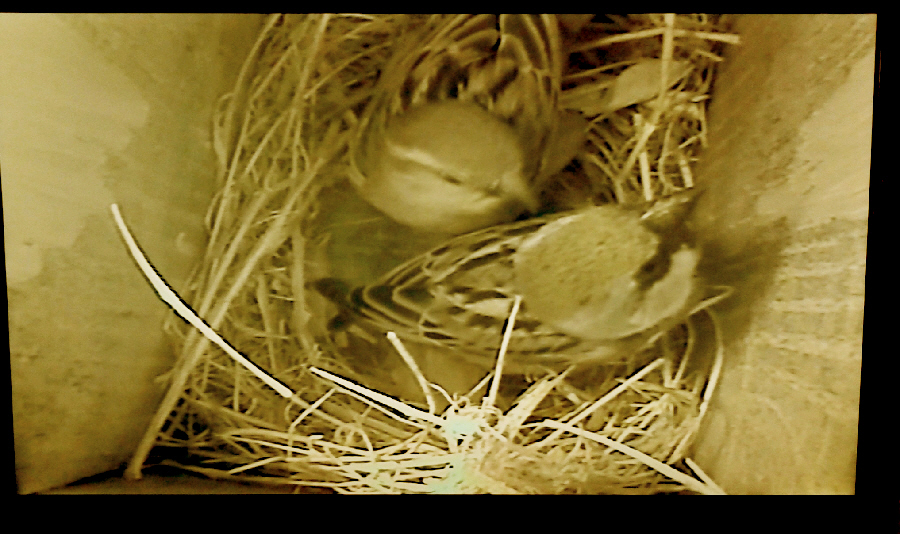CREATING YOUR OWN WILDLIFE GARDEN

You can create a rewarding and transformative connexion with nature and wildlife in even the most modest of gardens, including urban settings. And you can begin to get results quickly.
The fact is that turning a regular garden into a wildlife haven is not so much about doing stuff as it is about not doing stuff: not constantly tidying the place up, not dead-heading flowers when they’ve over, not necessarily planting new stuff, not weeding, hoeing or digging up beds. It’s mostly about getting out of the way and letting nature take its course, which it will do speedily and powerfully if permitted. It’s a natural process of reversion, which is what nature is perpetually trying to do.
For many people this means getting away from the traditional and quasi-moralistic idea that a garden must be neat and tidy and orderly or your neighbours will think you’re a terrible person. It’s a bit of a reversal of much quoted dictum from the Field of Dreams movie: if you don’t build it, they will come; they will naturally be attracted to your plot in preference to more sterile gardens around you.
Wild plants (often aka weeds) spread very quickly: remember how hard you have had to work to keep them at bay? They have incredible vitality, so that plants that are present already or which have circulated seed will quickly invade bare earth, which nature abhors because it’s not an efficient way to work. New plants will miraculously arrive, from seed blown in by the wind or carried on the feet and in the digestive systems of bird and mammals.
So nature is going to do 95-99% of the work for you; but the other 1-5%, where you take some constructive measures, can make a big difference. Such measures can greatly speed up the transition to wildness, increase the abundance and diversity of the plant and creature species, and make the garden a little more like you as an individual would like it to be. But keep it simple.

So here are my top-tip suggestions for measures to take to facilitate the transition to wildness, while still leaving overall control to natural forces and letting species exercise their own choice. Some of these measures take effect quickly while others need a bit more time to bring about their full effect. Take your pick. If you do both types, you’ll see quick rewards as well as a background evolution of a mature and super-abundant wild ecosystem over time.
1 Provide some food for birds and perhaps mammals, according to season. Your own garden will gradually provide more and more natural food resources, but supplementing food will speed things up and help creatures get through the toughest seasons. Good quality mixed bird seed in tough feeders is an obvious choice, with an option of fat or suet blocks for very cold weather. Food can also be provided as appropriate for mammals such as hedgehogs. Remember that once you start feeding, the creatures will build this into their way of surviving and will be dependent on it, so whatever level of support to provide, do it with consistency. It’s also important to make sure water is available, all year round.
2 Let at least some areas of the garden go completely wild. Let grass grow long and don’t worry if other plants invade it. Let, leaves, fallen twigs and dead plant material accumulate. Make habitats for invertebrates and other creatures by putting in log piles, leaf piles, compost heaps, and those insect hotels made out of hollow sticks which you can make or buy; some people make a ‘city’ version out of stacked pallets stuffed with a variety of hollow bits and pieces.
3 One of the best things you can do is establish a small pond if you haven’t one already. You can buy small prefabricated ponds from garden centres; make sure you get one with a shallow ramp at one end so that amphibians and other creatures can easily get in and out. Put some aquatic plants in, but leave two thirds of the pond as open water. You will be amazed at how quickly aquatic insects, frogs, newts and toads may find their way to your pond, and non-aquatic creatures will be able to drink from it or find food therein. Avoid full sun or full shade for the pond’s position.
4 You don’t have to add plant species; but if you do, remember that single flowering plants provide nectar for insects that double-flowering species don’t. Personally, I recommend native species over non-native, as they naturally attract and support much more native wildlife.

5 Shrubs and small trees can play an extremely valuable role in even a small wildlife garden, especially if they provide dense cover for birds to hide, roost and nest in, and if they provide food such as berries and flowers. They can also provide food and shelter for a great range of insects and butterflies and animals.
My suggestion, if you’re adding shrubs, is to create a segment of hedgerow, which is the ultimate resource for wildlife, to combine with open areas akin to a woodland glade. If you’re buying shrubs and small trees, buy them as mature as you can so that they will establish a mature habitat more quickly. You’ll find that they grow at an extraordinary rate in the natural habit if a wild eco-garden. The ultimate hedge will have climbing plants growing through the shrubs, providing a very dense protective canopy.
As with other plants, I suggest you prefer native species; and provide as great a variety as you can, just like what you’d find in a wild hedgerow. You can plant out only in winter if they’re bare-rooted, but any time of year if they’re in a pot. Here are my suggested top species for habitat creation and natural food provision for a European garden:
Shrubs and small trees:
Hawthorn
Holly
Elder
Hazel
Blackthorn
Rowan
Field Maple
Guelder Rose
Wild Cherry
Crab Apple
Goat Willow
Climbers:
Honeysuckle
Ivy
Blackberry
Wild rose
5 Provide nestboxes. These vary greatly in size of box and means of access and are each designed for specific species, so work out which type of birds are in your area and provide for those. Late winter is a good time to put nestboxes up so that the birds get used to them being there before they start to claim them to help attract a mate.

6 If you want to encourage hedgehogs to visit your garden and there isn’t ready access available, make a 12cm square gap at the bottom of your fence. See if you can persuade adjacent neighbours to do the same, to create a neighbourhood hedgehog highway. Gardens are becoming the key habitat for this endearing and increasingly rare species, as other habitats diminish. Gardens are also safer for them.
7 Get a trailcam – you’ll be amazed at who is coming to visit your garden throughout the night. Cameras inside nest boxes are great too.
8 Start observing immediately. Either sit still for a while in the garden, or watch from a window and stuff will start to happen. Different things will be happening at different times of day and different seasons. Notice how much better your new connexion with nature makes you feel.
9 Encourage children to visit your garden and learn about wildlife – its future depends on people in the future caring about it.
Wouldn’t it be wonderful if lots of urban gardeners decided to rewild at least a part of their gardens? This would have a huge beneficial impact on the ability of all kinds of wildlife to survive and thrive in our towns and cities – and would contribute significantly to helping reverse environmental degradation as a whole.
